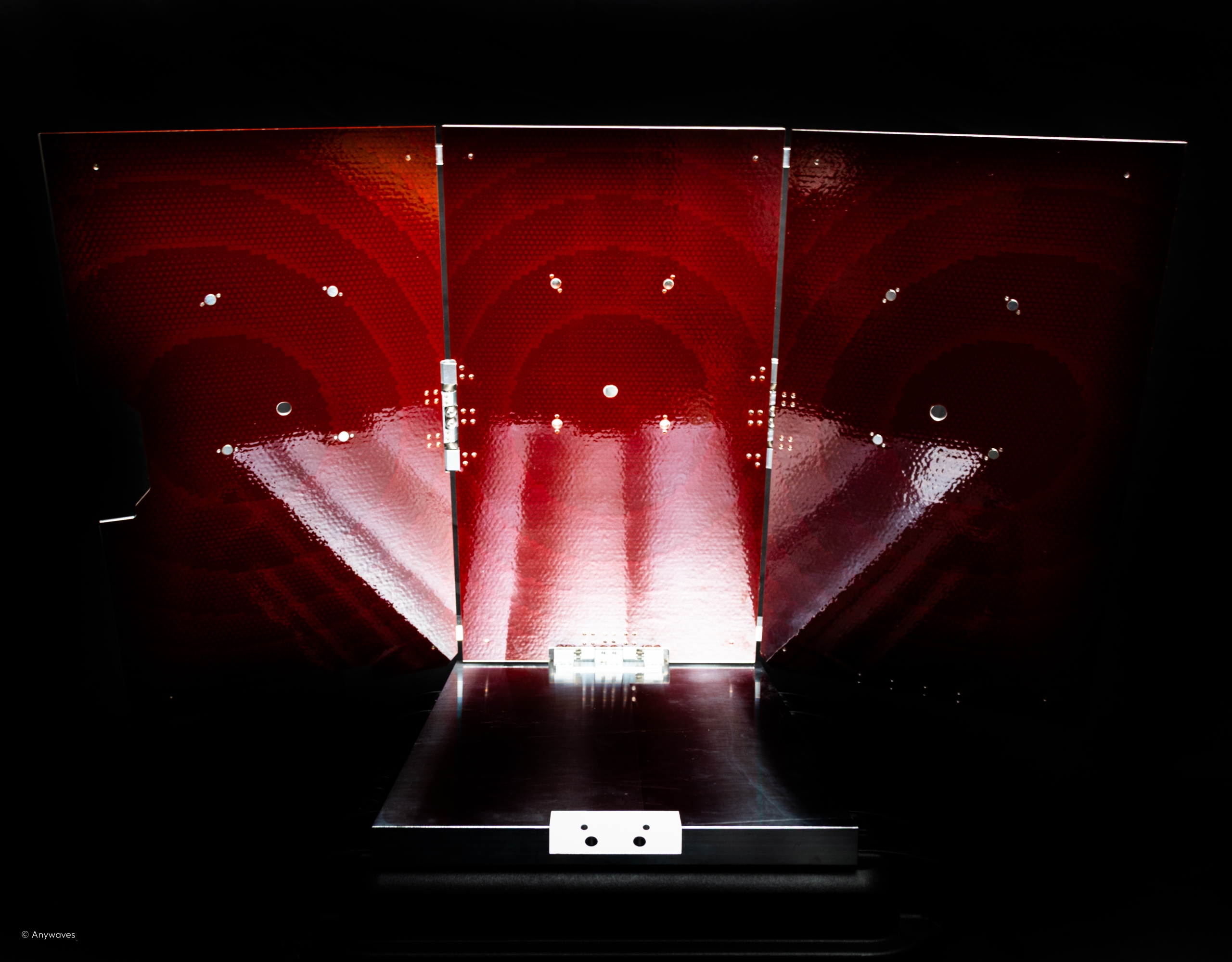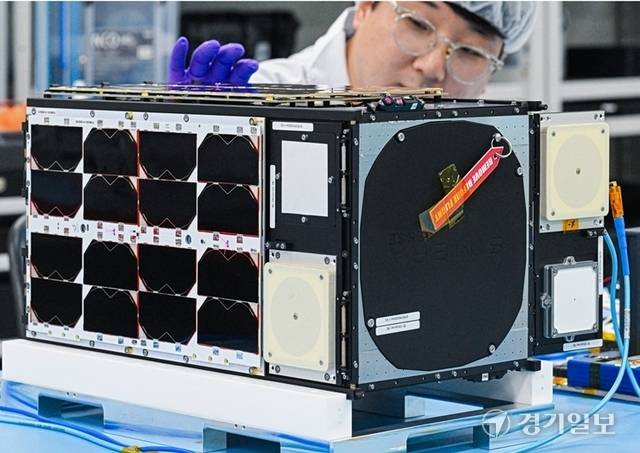Other news

What is Antenna Gain in Satellite Communications? (Explained simply)
Read more
Reflectarray Antennas for Small Satellites: From Concept to First Commercial Deployment
Read more
In satellite development, rigorous antenna testing is critical to ensuring reliable performance in orbit. Traditionally, these tests rely on anechoic chambers to replicate free-space conditions—an approach that can be both time-consuming and costly. Adding to these challenges are risks of physical damage, test data contamination, and potential safety hazards.
Now, Anywaves Test Hats offer an alternative. These specialized ground segment tools let engineers perform end-to-end RF (Radio Frequency) tests directly on the satellite platform—without having to repeatedly rely on anechoic chambers. By fitting over the antenna’s radome, Test Hats help create a more controlled test environment, reducing the time, expense, and mechanical risk associated with conventional setups. Below, we examine five common pitfalls in satellite antenna testing and show how Test Hats address each one.
Anechoic chambers excel at isolating the test environment from external reflections, but they’re often fully booked, require specialized personnel, and incur significant usage fees. Transporting the satellite or scheduling multiple tests can balloon project timelines and budgets—especially when engineers need numerous iterations to refine antenna performance.
By letting you test the antenna on the actual satellite—with the Test Hat covering the radome—teams can take repeated measurements in situ. There’s far less need to reserve an anechoic chamber for every design tweak or retest. This approach cuts turnaround times, lowers operational costs, and frees up chamber availability for the most critical experiments only.
Satellite antennas and their protective radomes can be surprisingly delicate. Repeatedly moving the satellite into a chamber, reconfiguring test setups, or removing protective casing can lead to scratches, dents, or scuffs on the radome. Even minimal damage can remove protective paint, thereby shortening the antenna’s overall lifespan—and potentially leading to reliability issues if not caught early.
Anywaves Test Hats fit securely over the antenna’s radome, acting as a controlled interface for testing. Since you’re no longer forced to dismantle or frequently reposition the antenna for each measurement, there is far less direct handling of the radome. The Test Hat design allows you to protect the antenna’s sensitive outer surface from accidental bumps or wear, helping maintain the structural and RF performance characteristics for the long haul.
Laboratory environments are rife with electrical noise—from lab equipment, nearby radio transmissions, or even signals reflecting off metallic surfaces. Such interference can mask genuine antenna performance issues or create misleading data spikes. Anechoic chambers help but aren’t always available, nor do they solve every interference problem once the satellite is out of that controlled space.
Engineered as an aluminium cavity (cylindrical or squared) lined with absorber material, the Anywaves Test Hat encloses the radome and minimizes external reflections. The RF probe integrated into the Test Hat captures the antenna’s signal in a consistent manner, providing a localized, interference-reduced environment. This design helps deliver clean, repeatable measurements—comparable to those obtained in a chamber—yet achievable right on the satellite platform.
Working in or around an anechoic chamber with a powered transmitter can pose safety risks for personnel. Maneuvering large hardware, working at elevated positions to align the satellite, and dealing with high RF power levels can lead to accidents or long-term health concerns if exposure levels aren’t carefully managed.
By conducting many of the end-to-end RF tests outside of the chamber, technicians spend less time in confined or high-power environments. The Test Hat localizes much of the RF activity around the radome, reducing stray emissions in the surrounding area. With fewer heavy transports and less reconfiguration, the overall testing process becomes safer and more straightforward.
Conventional testing often involves complex scheduling and multiple rounds of chamber use. This can create a significant delay between the last formal round of RF testing and the actual launch date—leaving room for late discoveries, last-minute design tweaks, or unforeseen hardware issues that can further derail timelines.
Because Anywaves Test Hats enable on-platform, end-to-end RF checks outside anechoic chambers, you can perform critical tests much closer to the launch window. This flexibility reduces the gap between final verification and liftoff, minimizing the risk of any unaddressed issues lingering until it’s too late to fix them. By speeding up final testing—and making re-tests faster when needed—mission managers gain more confidence in the satellite’s readiness before it heads to the launchpad.
For decades, anechoic chamber testing was synonymous with accurate satellite antenna validation—but at a steep cost in time, money, and labor. Anywaves Test Hats address these bottlenecks by enabling on-platform, end-to-end RF testing that maintains high measurement fidelity while drastically simplifying the process. From protecting the radome to reducing interference and enhancing operator safety, Test Hats offer a modern, user-friendly solution for satellite programs aiming to tighten schedules and reduce last-minute surprises.
Whether you’re looking to cut project costs, shorten the gap between your final tests and launch, or minimize risk in your testing procedures, Anywaves Test Hats—available for S-band, GNSS, and X-band antennas—can transform how you qualify your spacecraft hardware, ultimately leading to greater mission success in orbit.



If you have any question, we would be happy to help you out.